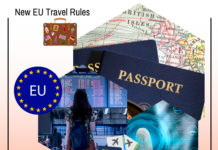Austria
Austria’s cities are a beguiling blend of traditional historic attractions set in a lively contemporary atmosphere. Along with the Imperial Palace, Vienna Boys’ Choir and Spanish Riding School, Vienna entices visitors with museums, theaters and exquisite dining. Elegant shops abound on the Graben, Kohlmarkt and Kärntner Strasse. In Salzburg, birthplace of Mozart, music lovers can experience over 4,000 cultural events annually, including a candlelit dinner concert in the Stiftskeller St. Peter, Europe’s oldest restaurant. For a change of pace, overnight in an Austrian ski resort, lakeside manor, rustic hunting lodge or historic castle. Official language is German and the currency is the Euro.
Czech Republic
From the cosmopolitan capital of Prague to the back-in-time villages of Moravia, the Czech Republic offers great cultural variety. Explore 12 UNESCO World Heritage Sites and over 2000 castles and chateaux! The Czech Republic is an ideal place to relax in world-renowned Spa towns, such as Marienbad and Carlsbad, offering state-of-the art spa facilities and great golf courses. Prague is one of the most dynamic and trendy cities in Europe, showcasing an array of architectural styles, new design boutique hotels, trendy restaurants and shops. The language is Czech and the currency is the Czech Koruna (crown).
Germany
Every day, more than 1,500 events take place in Germany’s capital city of Berlin. Architectural highlights include the Brandenburg Gate, the Reichstag, the Opera House and Berlin Cathedral. Visitors also have a choice of 170 museums. The green city of Munich (it has over 74,000 acres of parks and gardens) is one of Germany’s major cultural centers, with numerous monuments and museums. The city’s most important art venue, the Alte Pinakothek, features nearly 900 paintings by Europe’s greatest artists. Venturing into Germany’s countryside, consider a stay in a mountain chalet or a simple country inn. Official language is German and the currency is the Euro.
Hungary
Hungary has some impressive numbers. The country has 22 wine-producing regions, with wineries open to visitors throughout the year; 10 national parks and 6,000 miles of hiking trails. Budapest has 120 natural hot springs (the first spas in Hungary were established by the Romans). There are many fabulous hotels; for instance, The Le Méridien Budapest garners great raves. In the countryside, castles and mansions have been restored and opened as hotels. In rural areas, the country’s “village tourism” program is attracting visitors seeking farmhouse stays. Language is Hungarian and the currency is the Forint.
Poland
Poland has always been on the East West crossroad serving as a natural bridge between western and oriental civilizations. The country has an abundance of natural beauty as well as a wealth of historic architecture. Contemporary Poland offers international standards of service, but visitors pay local prices. The most upscale accommodations are concentrated in the capital city of Warsaw, the historic city of Krakow and the Baltic Sea coast cities of Gdansk and Sopot. Historic Krakow has Europe’s largest market square and numerous sites of interest. The town of Sopot is the site of the Crooked House, the most photographed building in the entire country. Poles speak Polish and the currency is the Zloty (PLN).
Slovakia
Nature-lovers flock to Slovakia. Forests are a natural treasure in Slovakia, accounting for 40 percent of its total territory. The country’s Tatra glacier lakes are called tarns, and in combination with the surrounding mountains provide stunning scenery. Slovakia has more than 1,200 mineral and thermal springs; stand-out spas are Pieštany spa in western Slovakia, Bojnice in middle Slovakia and Bardejovske spa in north-eastern Slovakia. Hotels are concentrated all around the country; visitors have a choice of five-star hotels, castle lodgings, cottages, and ski and mountain lodges. Language is Slovak and the currency is the Euro.








